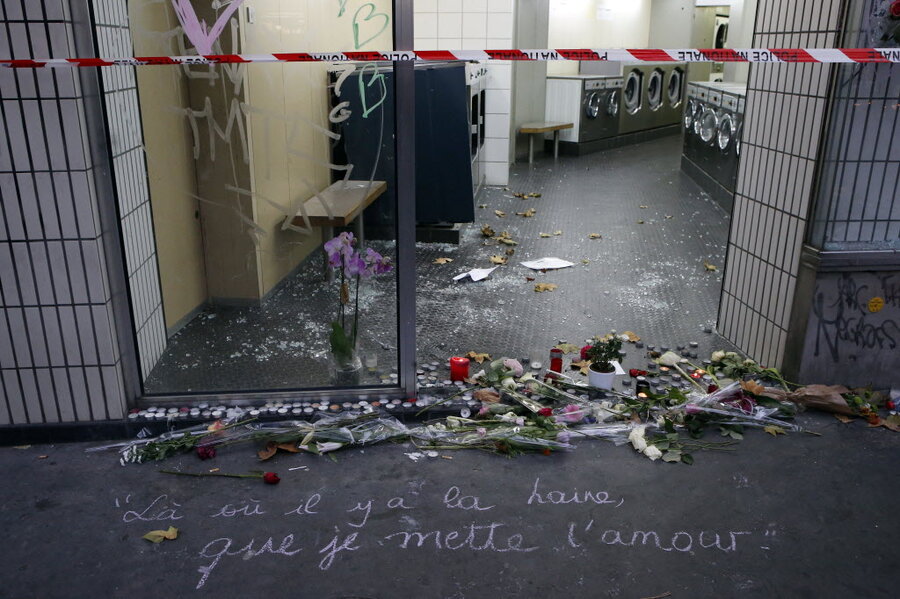How sophisticated were the Paris terror attacks?
Loading...
| Washington
In the wake of the attacks on Paris that “bear the hallmarks of terrorism” carried out by the Islamic State, CIA Director John Brennan said Monday that the coordinated shootings were “fairly sophisticated.” His view echoed statements over the weekend by French intelligence officials.
Some analysts, however, have pushed back against the notion that the attacks required particularly advanced levels of planning, coordination, or training.
The attacks on Friday were not the first multiple-site attack by a terror group – in fact, one was carried out in Beirut, Lebanon, earlier that week. And some analysts have pointed out similarities to the Mumbai attacks in 2008, in which an Islamic militant organization carried out 12 shooting and bombing attacks over four days in the Indian city.
While the attacks in the French capital were effective in creating terror, they did not require a great deal of training or coordination, says Paul Scharre, senior fellow at the Center for a New American Security and a former US Army Ranger.
“I wouldn’t use the word ‘sophisticated,’ ” he says. “Deadly? Yes. Frightening? Yes. But this doesn’t require a lot of training to pull off.”
President Obama appeared to be among those questioning the level of the terrorists’ sophistication in remarks Monday.
“If you have a handful of people who don’t mind dying, they can kill a lot of people,” he said, speaking at the G20 summit in Antalya, Turkey. “That’s one of the challenges of terrorism: It’s not their sophistication or the particular weaponry that they possess, but it is the ideology they carry with them and their willingness to die.”
The question of the level of capabilities demonstrated by the six attacks on Friday, which killed 129 people, has both political and military implications for France and its allies, including the United States.
A sophisticated cadre of terrorists maneuvering against the citizens of Paris and creating mayhem might increase calls for more US troops and airstrikes to wipe out “safe havens” where they train and coordinate, even if these places lie in the middle of civilian population centers.
Indeed, some pundits have argued that the efforts that the US has put into avoiding civilian casualties have “hamstrung” the US military in its operations in Syria and Iraq. “We must immediately recognize that our enemy is not ‘violent extremism.’ It is the radical Islamism that has declared jihad against the West. It will not be appeased by outreach or declarations of tolerance,” said Republican presidential candidate Sen. Ted Cruz on Friday. “It will not be deterred by targeted airstrikes with zero tolerance for civilian casualties, when the terrorists have such utter disregard for innocent life.”
Arguing that the attackers were sophisticated and well trained might also give credence to critics who say that Mr. Obama underestimated the capabilities and reach of the Islamic State.
In the Paris attacks, some analysts have pointed to the methodical way in which the gunmen aimed and shot their victims rather than spraying bullets, for example, and have argued that this involves military-like discipline and training.
“Aiming rifles makes them more accurate, but it’s not like that requires a lot of training. People can learn to do that in online video games – that might not make an expert marksman, but at close range inside a building you don’t have to be that accurate,” says Mr. Scharre.
Analysts note that one of the suicide attackers at the Stade de France appeared to arrive behind schedule, 15 minutes after the game began, and a propane tank he was carrying in a backpack filled with nails, meant to act as a makeshift bomb, did not go off.
That’s not the first time that a would-be terrorist’s equipment has failed. In an attempted attack on a high-speed train bound for Paris back in August, thwarted by Americans who charged and tackled the gunman, the ammunition that the gunman was attempting to use in the attack was old and ineffective, the American service members who stopped him have said.
What seems clear, if the attackers last Friday were indeed affiliated with the Islamic State, is that “it shows capability to organize cells well outside their headquarters and to provide them with plans and weapons,” says Michael Singh, senior director for Middle East affairs at the National Security Council from 2005 to 2008 and now a managing director at the Washington Institute for Near East Policy in Washington.
Yet as concerning as supply and networking links between terrorists may be, these links also offer opportunities for discovery and interception.
“A network is going to be more capable, but also more vulnerable,” Mr. Singh says.
Adds Mr. Scharre: “If you look at a complex terrorist attack that requires a lot of training and financial backing – those are easier to disrupt.”






